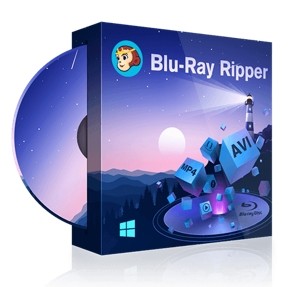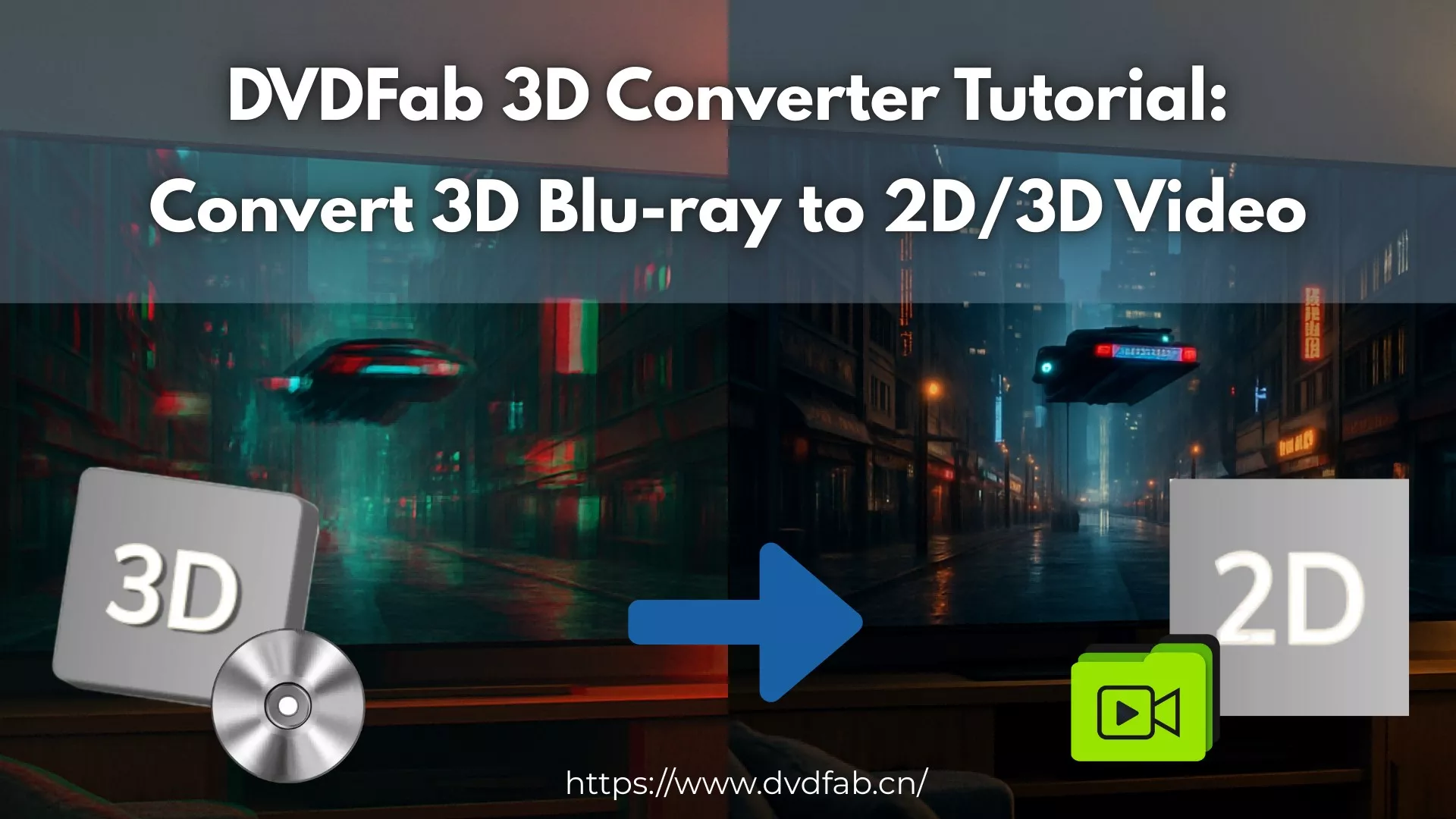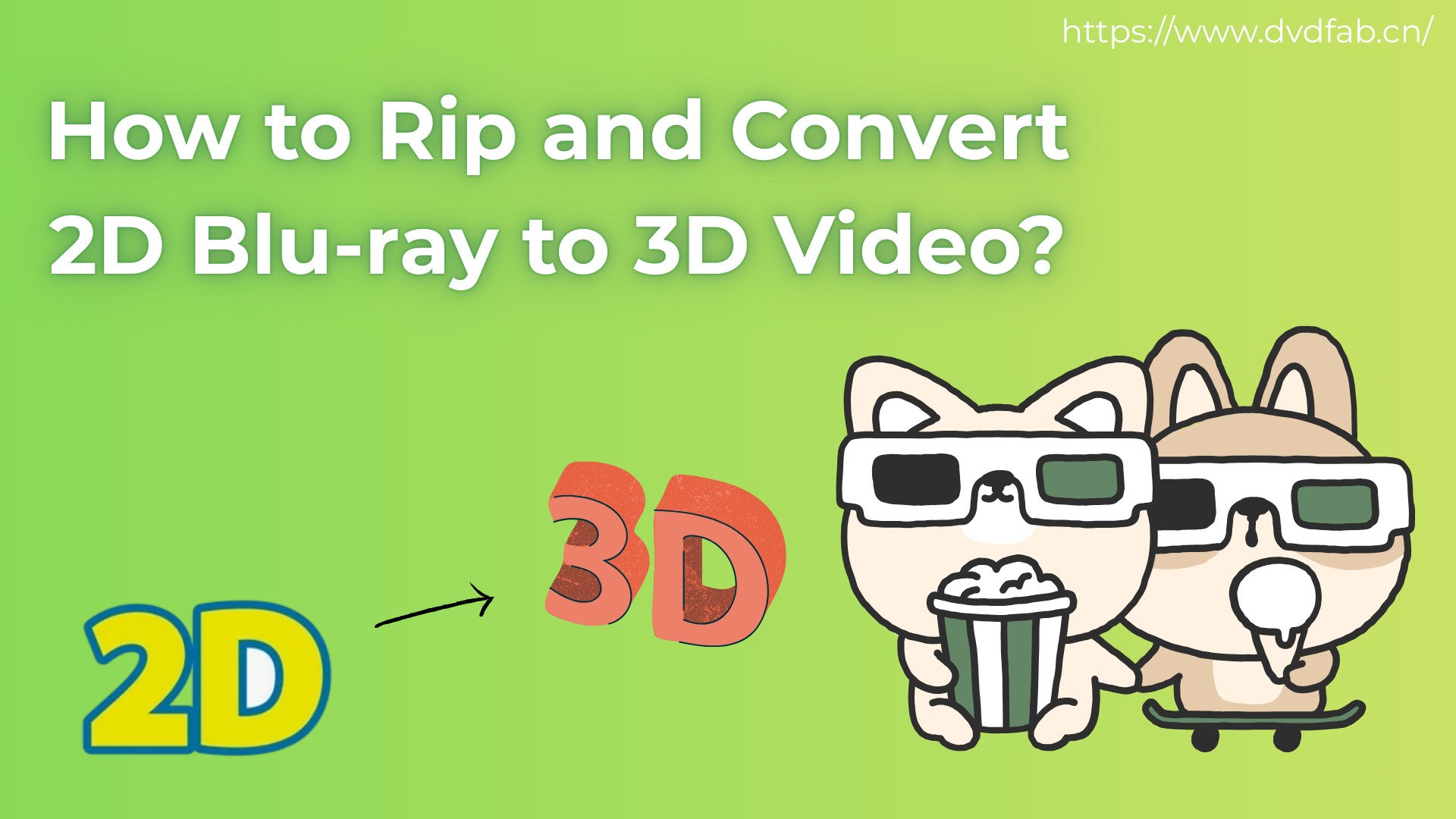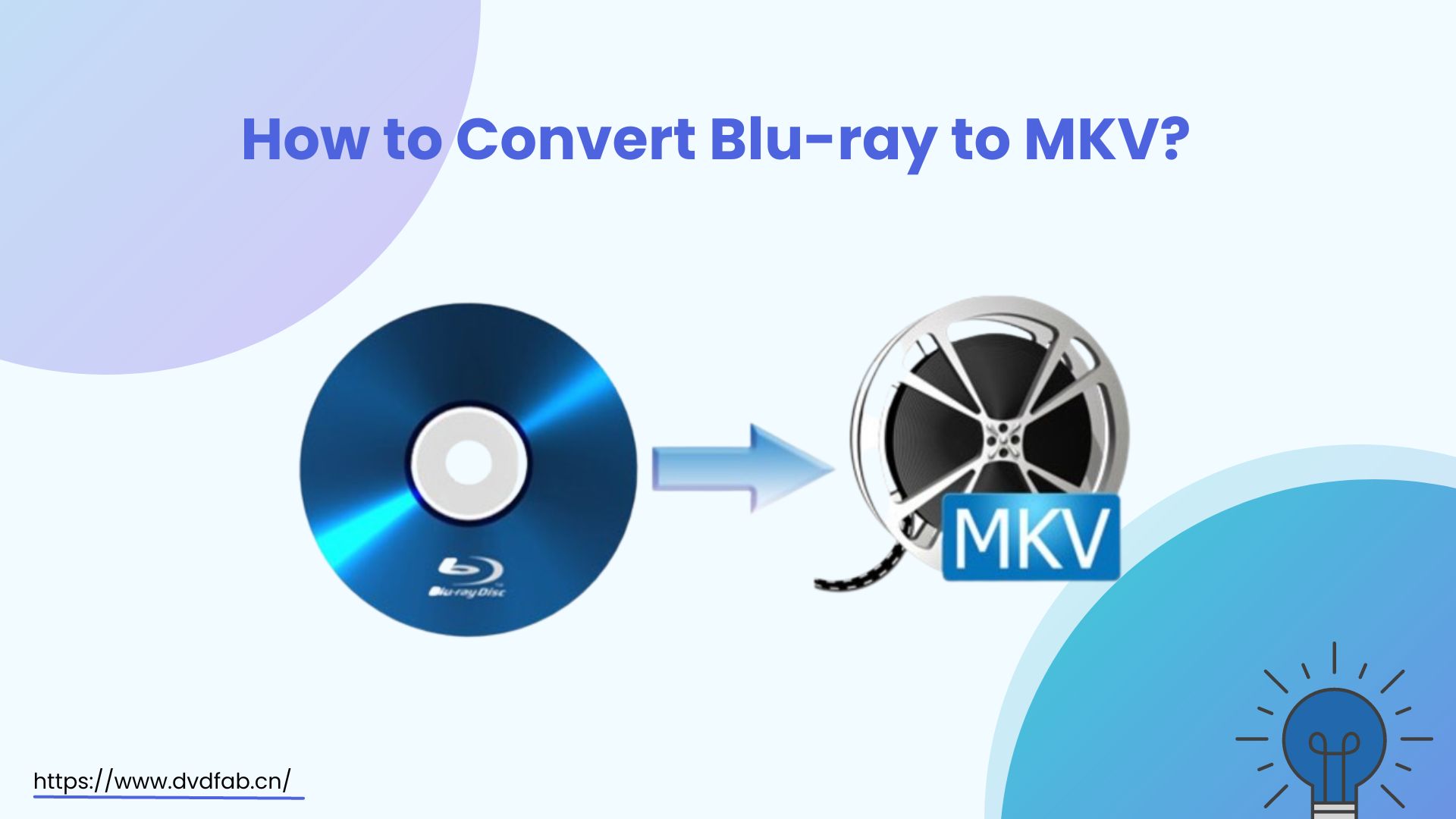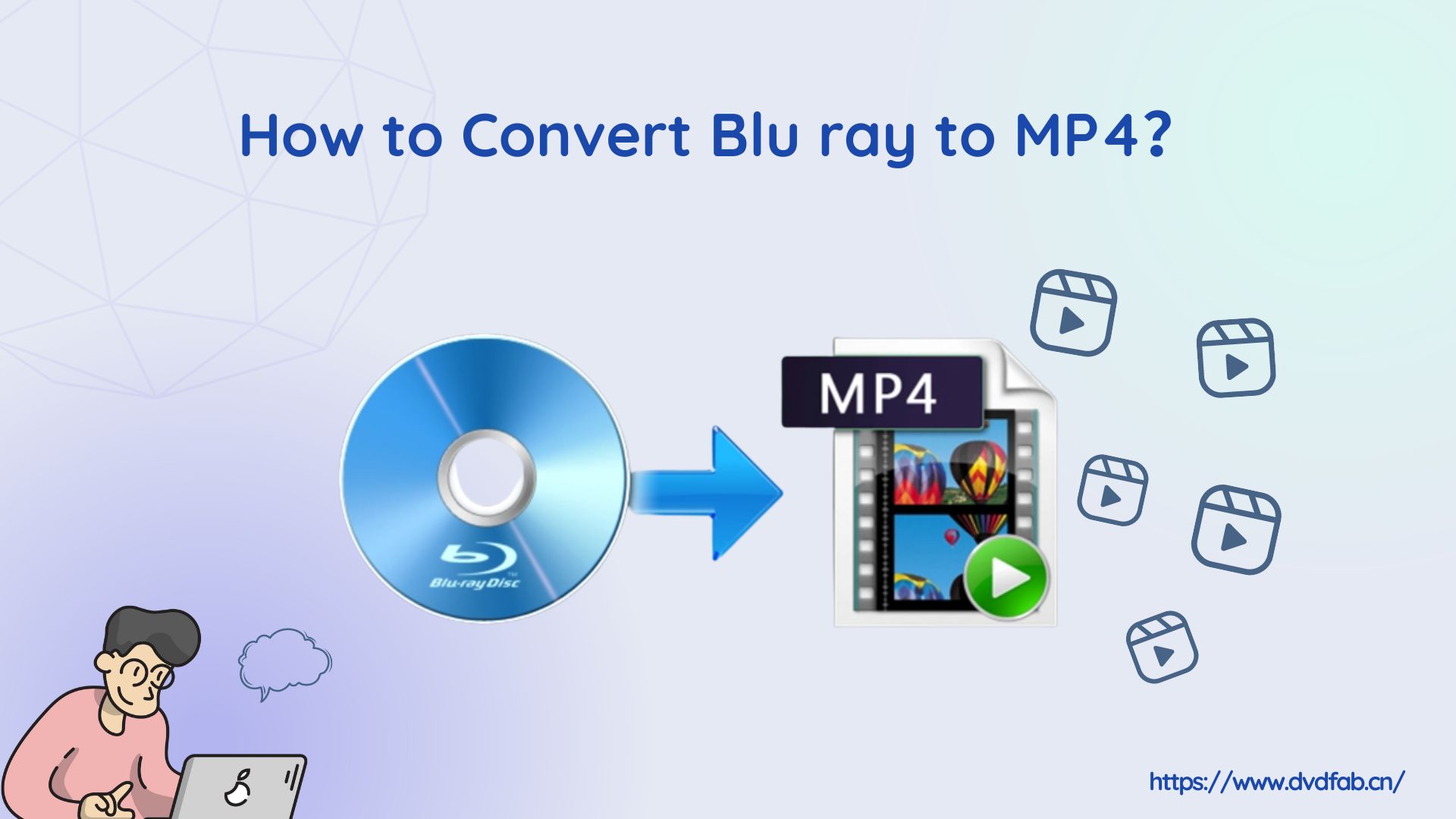Blu-ray vs 4K UHD: Key Differences, Pros and Cons [2025 Updated]
Summary: Wondering if 4K Ultra HD is really better than Blu-ray? This updated guide compares Blu-ray and 4K UHD discs across resolution, HDR, bitrate, audio, and cost. You'll learn when 4K shines, where Blu-ray still holds up, and how to pick the best option for your setup.
As home entertainment technology keeps advancing, many movie lovers wonder: is 4K Ultra HD always better than Blu-ray? When I got a new TV, I asked myself the same thing and spent weekends comparing my favorite movies in different formats.
I learned that Blu-ray has been the HD standard for a long time since it has superb picture quality and is widely available. However, 4K UHD has higher resolution, HDR, and immersive audio, but it also needs the right equipment and is often more expensive.
In this guide, I'll talk about the real differences in quality, HDR, sound, and price. I'll also explain when Blu-ray is still useful and provide you useful tips on how to choose the best format for your system.
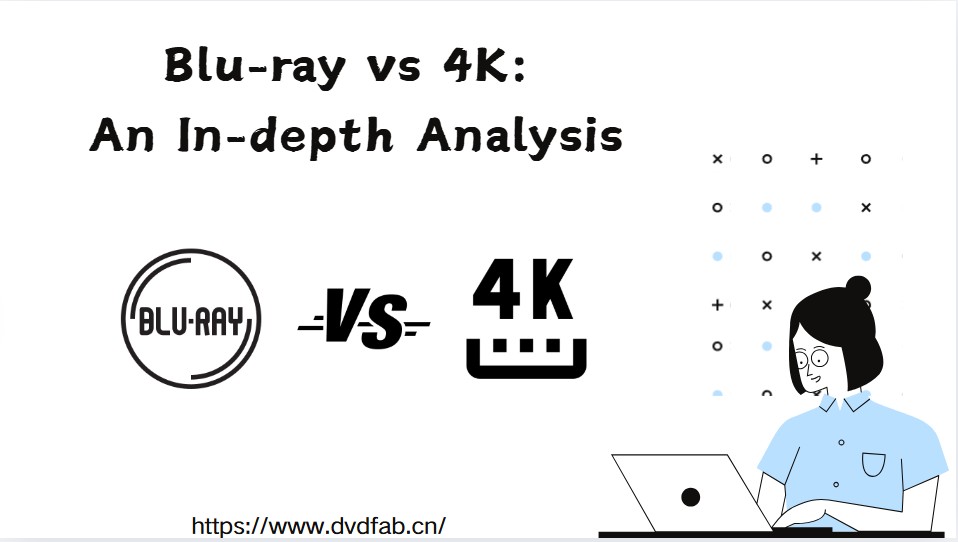
What are Blu-ray and 4K UHD?
What is Blu-ray?
Blu-ray Disc (BD) is a high-definition optical disc format that has taken the place of DVD as the most popular way to watch movies and play games. It uses a blue-violet laser with a wavelength of 405 nm to read and write data at a far higher density than the red laser used in DVDs.
A single-layer Blu-ray can hold roughly 25 GB, and a dual-layer disc can carry up to 50 GB. That's enough space for several hours of HD film in 720p or 1080p with lossless audio tracks. This format became popular since it had greater quality than DVD and had features like extra bonus content and region coding. Many cinephiles still choose Blu-ray for its cost and large title availability. There was even a format war in the middle of the 2000s between HD DVD vs Blu-ray. Blu-ray won in the end and became the standard for high-definition discs.
What is 4K UHD (Ultra HD Blu-ray)?
When people talk about 4K, they usually mean Ultra HD Blu-ray, the physical disc standard for 4K Ultra High Definition home video. It delivers a resolution of 3840 × 2160 pixels (UHD), four times the pixel count of Full HD Blu-ray. In professional cinema, you may also hear DCI 4K (4096 × 2160), but UHD is the dominant standard for TVs and consumer players.
Beyond the resolution bump, UHD Blu-ray supports HDR formats (HDR10 is mandatory; Dolby Vision and HDR10+ are optional), a wider BT.2020 color gamut, 10-bit video depth, and typically higher bitrates. Audio often includes immersive formats like Dolby Atmos or DTS:X.
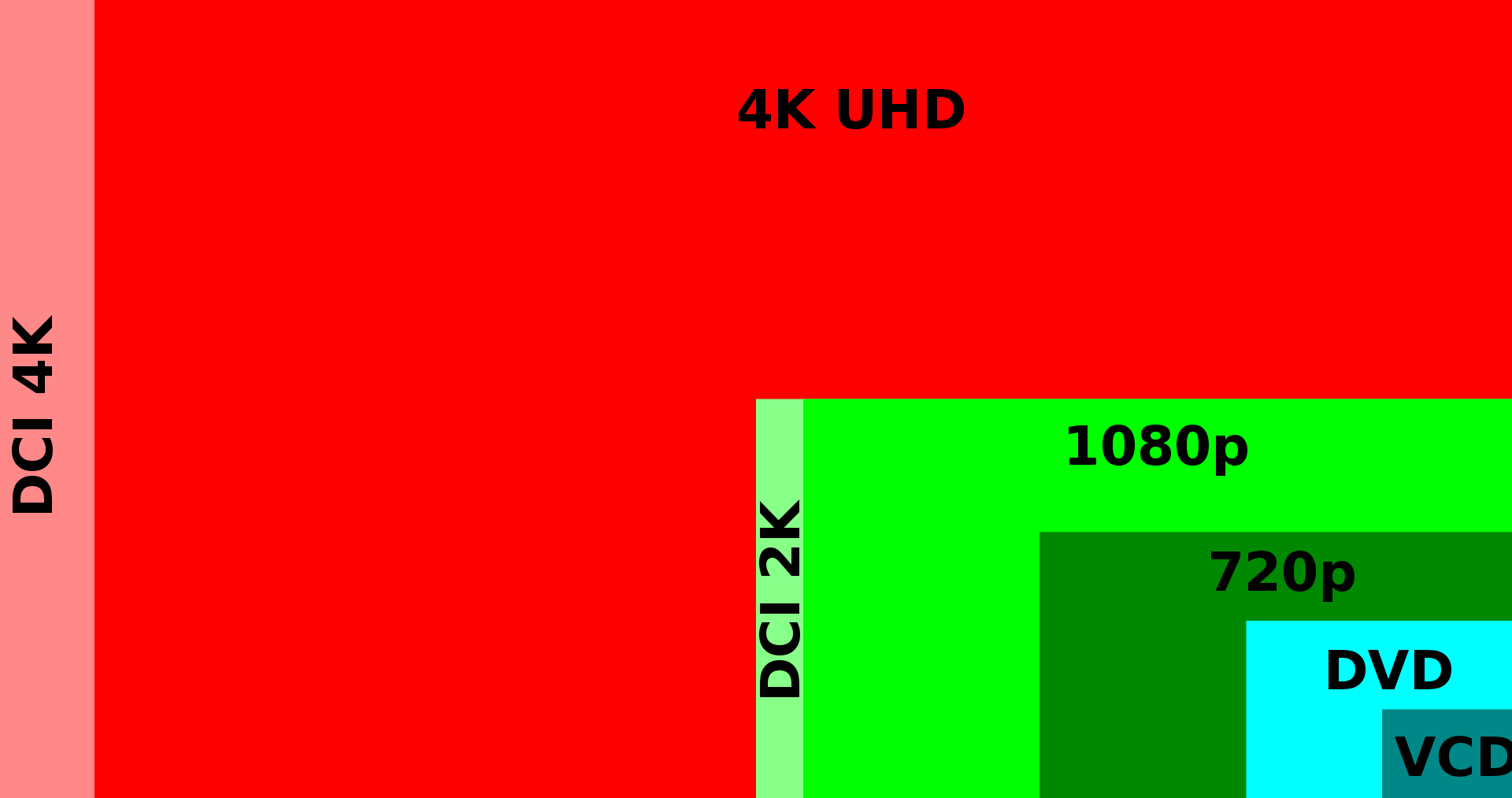
Blu-ray vs 4K UHD: Key Differences & Comparison
To help you understand the true differences between Blu-ray, 4K UHD discs, and even streaming as a supplementary option, the table below summarizes the key specs and features.
| Features | Blu-ray | 4K Ultra HD | 4K Streaming |
|---|---|---|---|
| Resolution | 1080p (1920 x 1080) | 4K (3840 x 2160) | Up to 4K |
| Bitrate/Quality | 20-40 Mbps video |
50-100+ Mbps video (HEVC) |
~15-25 Mbps (subject to internet speed) |
| HDR & Color | SDR, Rec.709, 8-bit | HDR10 (mandatory), Dolby Vision/HDR10+ (optional), 10-bit BT.2020 |
HDR varies; often compressed, depends on service |
| Audio Formats | DTS-HD MA, Dolby TrueHD (lossless) | DTS-HD MA, Dolby TrueHD, Dolby Atmos, DTS\:X (lossless) | Dolby Digital+/Atmos (lossy; often 5.1) |
| Storage Capacity | 25 GB (single-layer), 50 GB (dual-layer) | 66 GB (dual-layer), 100 GB (triple-layer) | N/A |
| Compatibility | Standard Blu-ray players | Requires 4K UHD player | Compatible streaming device & stable internet |
| Price | $10–\$20 per disc | \$25–\$35 per disc |
Subscription fees (\$10–\$20/month) |
💡Many readers also wonder about consoles—like whether the Xbox 360 can play Blu-ray. Spoiler: it can't, since the Xbox 360 was designed in the HD DVD era, but newer Xbox models (like Xbox One and Xbox Series X) support Blu-ray and UHD playback.
Resolution & Video Specs
Blu-ray delivers 1080p HD (1920×1080), which still looks excellent on many TVs, especially under 55 inches. In contrast, 4K UHD offers 3840×2160 resolution, plus 10-bit color and HDR. This allows for deeper contrast, and richer colors, provided you have an HDR-capable display.
However, 4K is not always better in every case. Some UHD discs are mastered from 2K digital intermediates; while they benefit from HDR and higher bitrates, the sharpness jump may be less dramatic. Viewing distance and screen size also matter.
Audio Quality
Both Blu-ray and UHD Blu-ray can deliver lossless, uncompressed audio, often with immersive formats like Dolby Atmos or DTS:X on UHD discs. With a proper surround sound setup, UHD discs can unlock truly cinematic soundscapes.
By contrast, most streaming services compress audio. Even when "Atmos" is listed, it's typically in Dolby Digital+ (lossy) with reduced bitrates, often limited to 5.1 channels. If audio immersion is important, discs (Blu-ray or UHD) are still the winners.
Content & Availability
Streaming platforms win on convenience and instant access, as you can watch 4K titles at the push of a button. However, their catalogs rotate, and not all titles offer maximum quality or bonus features.
Blu-ray & UHD disc have the advantage for collectors. Bonus features like director's commentary, deleted scenes, and collector's editions with posters or memorabilia are frequently included in UHD and Blu-ray. Once you buy the disc, you own the content permanently. Plus, the audio and video quality is consistent and not affected by your internet speed or by titles being removed due to licensing.
Upscaling vs Native 4K UHD Discs
A major source of confusion is 4K upscaling. Many Blu-ray players and TVs upscale 1080p Blu-rays to 4K quality, but this does not generate actual 4K detail, HDR, or broader color. It's a mathematical expansion to fit 4K screens. By comparison, native 4K UHD discs have actual 4K masters, 10-bit HDR, and BT.2020 color gamut, giving a true boost in visual fidelity. Some UHD titles mastered from 2K still benefit from HDR and higher bitrates, although not as substantially as native 4K sources.
Blu-ray or 4K UHD: Cost & User Cases
Price & Cost Considerations
There are three primary elements to consider: disc prices, equipment, and continuing subscriptions.
- Disc prices: In the U.S. market, a Blu-ray typically costs around $10 to $20, while a 4K UHD disc is more expensive, usually $25 to $30. For special collector’s editions, prices can sometimes be even higher.
- Players and setup: A Blu-ray player is fairly affordable and easy to get, often priced under $100. A UHD player with HDR support generally costs more. If you want an immersive 4K experience, you’ll also need an HDR-capable 4K TV and possibly a modern AV receiver.
- Streaming as a reference: Services like Netflix or Disney+ cost roughly $10 to $20 per month for a 4K plan. They’re cheaper upfront and very convenient, but they depend on your internet bandwidth and use compressed video and audio compared to physical discs.
💡Related reading: Netflix DVD Queue
Blu-ray still gives exceptional value: you own the movie permanently, enjoy consistent quality, and don't rely on bandwidth or expiration licensing. UHD discs cost extra but give the finest quality accessible at home.
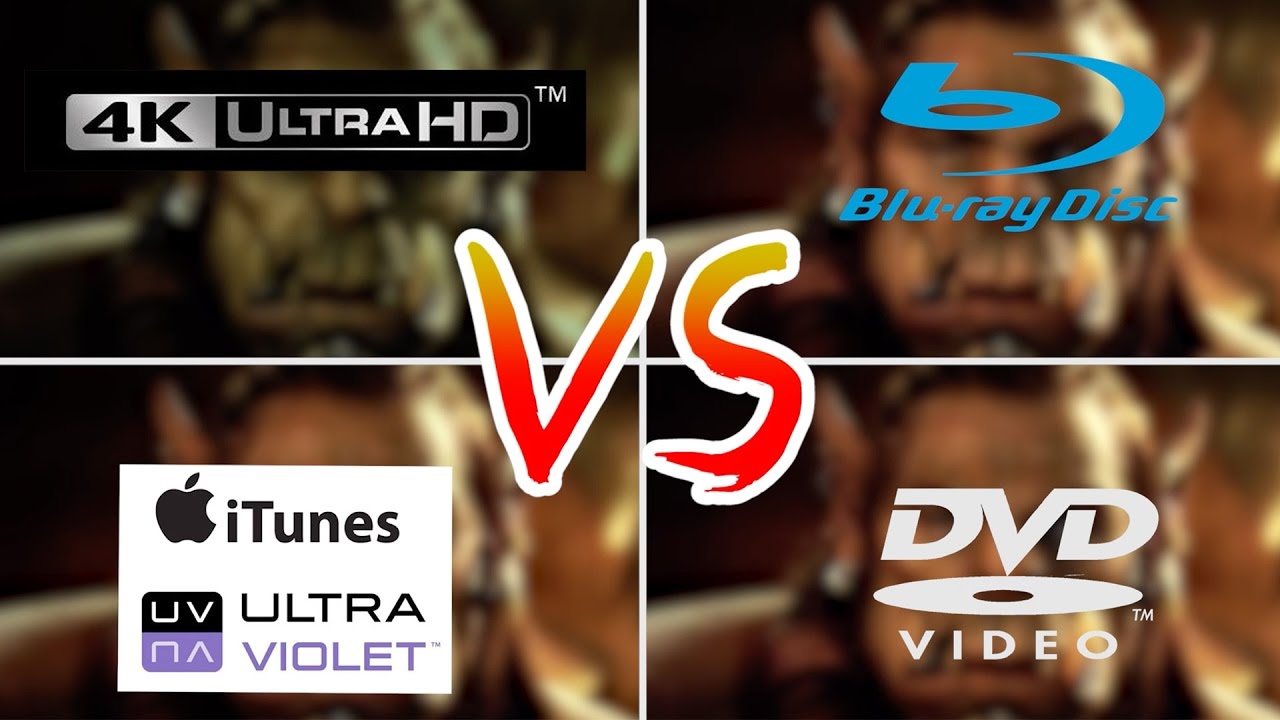
Use Cases & Buying Guide
Choose Blu-ray if:
-
You just want reliable 1080p HD for most movies and TV show
-
You'd like cheaper discs and player
-
You need a Blu-ray disc works with most TVs and older player
Choose 4K UHD Blu-ray if:
-
You have a 4K HDR TV and a decent sound system and want to really use them to the fullest
-
You care about the sharpest picture, HDR effects, and immersive sound
- You watch blockbusters, premium content, or want the best quality for long-term archivin
💡Many UHD products include a standard Blu-ray or digital code, providing wide compatibility across platforms.
Recommended: Best Blu-ray & UHD Ripper Software
DVDFab Blu-ray Ripper

- Legal note: This tool is intended for legitimate personal use (e.g., backing up discs you own). Please ensure compliance with your local copyright laws.
- Works with any Blu-ray protection to enable access to your discs; support is updated regularly
- Convert Blu-ray discs, ISO files, or folder to popular video and audio formats
- Leverage advanced GPU acceleration technology and multitasking capabilities
- Optimized output for 245+ device profiles (e.g., iPhone, iPad, Huawei, Smart TVs)
- Built-in video editor lets you trim, crop, rotate, add subtitles, or watermarks
How does DVDFab Blu-ray Ripper work?
Step 1: To begin, launch DVDFab software and navigate to the Ripper section. Insert the desired Blu-ray disc, or utilize the Add option to import an ISO file or folder that is already saved on your computer.
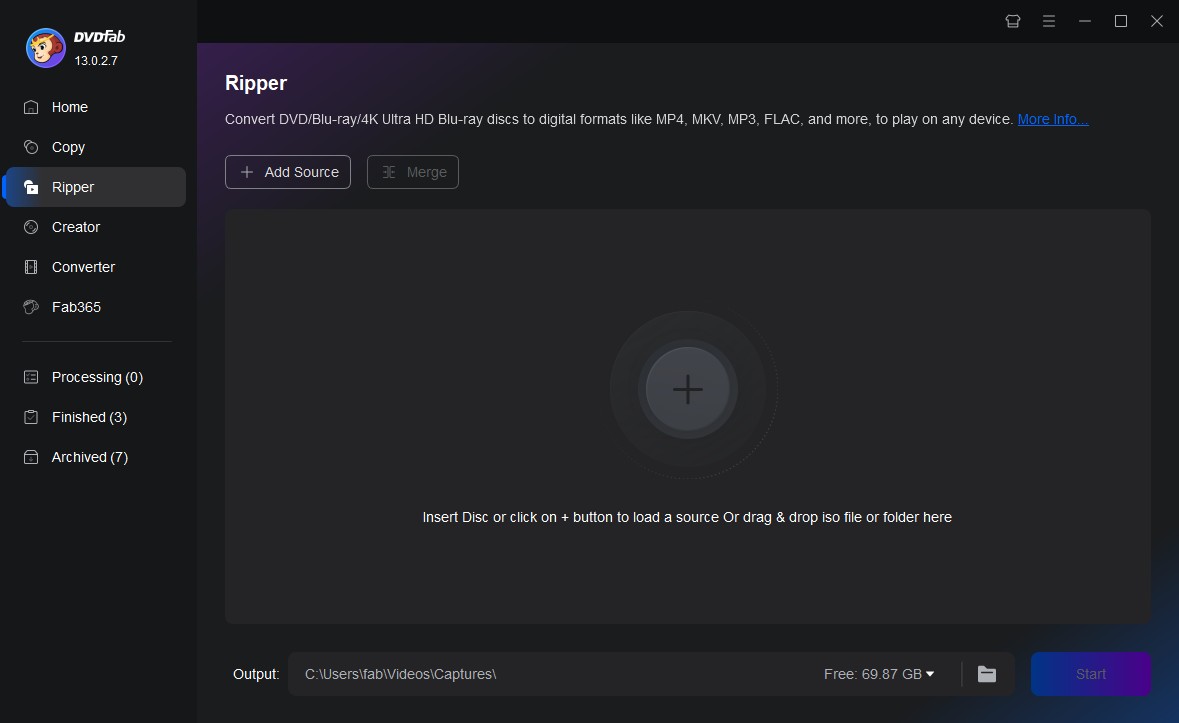
Step 2: Click on "Choose Other Profile" to select the format and code you prefer. Additionally, you have the option to choose specific titles, audio tracks, and subtitles to keep. For further customization of the output video, please explore the 'Advanced Settings' and utilize the built-in 'Video Editor'.
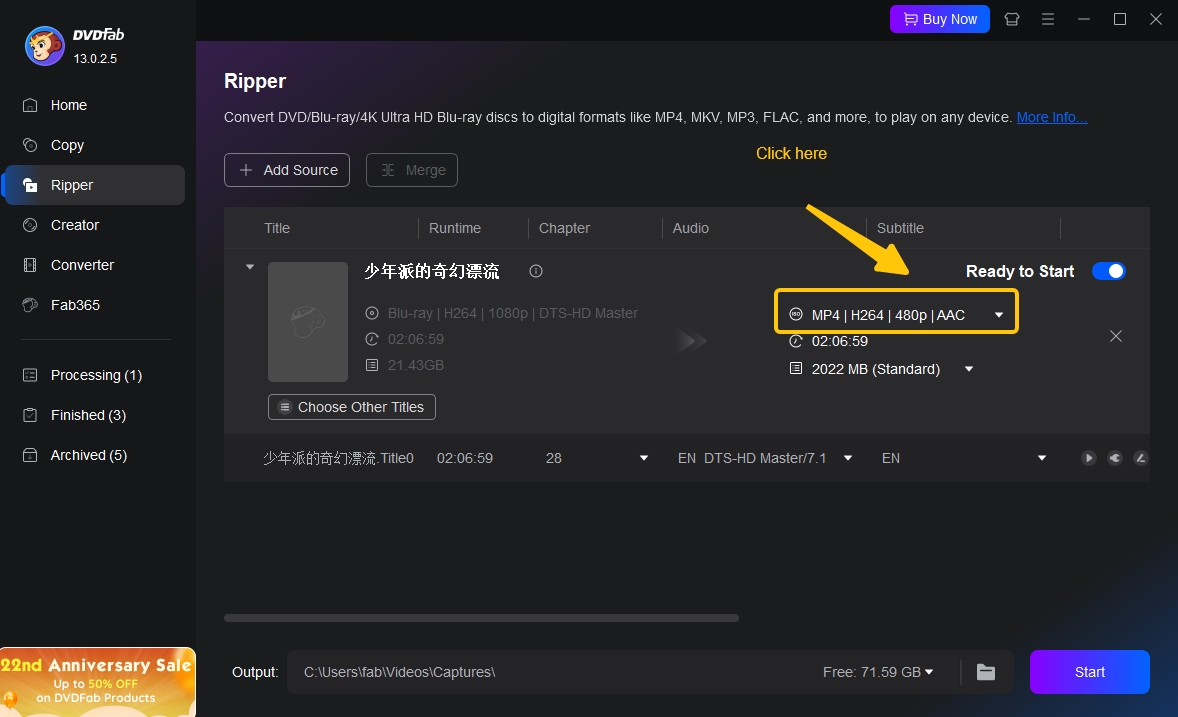
Step 3: You can store your video on your HDD or mobile device. Click the Start button, and this Blu-ray Ripper will commence the process of extracting the content from the Blu-ray disc.
DVDFab UHD Ripper
With DVDFab UHD Ripper, you have the capability to transform any Ultra HD or 4k UHD Blu-ray into the MP4/MKV format within a mere 15-minute. This exceptional tool ensures the retention of HDR10 and Dolby Vision effects, allowing you to enjoy seamless playback on various devices, home theaters, and media players.
- Eliminate Protection from Ultra HD Blu-ray to Enable Conversion
- Reduce Video File Size without Compromising Quality for All Mobile Devices
- Preserve HDR10/Dolby Vision Effects while Converting UHD Blu-rays
- Extract video and audio from any Ultra HD Blu-ray with personalized settings
- Enable multitasking mode for 50x faster video ripping speed
- Eliminate Blu-ray Cinavia and generate pristine audio
FAQs
Not necessarily. The actual viewing effect also depends on how powerful your device is. Even if the disc itself looks amazing on paper, if your setup can't keep up, the experience still won't be good.
- Screen Size and Distance: On a large HDR TV, the difference is noticeable if you're sitting relatively close. On a smaller screen or at greater viewing distances, it's less dramatic.
- Source Quality: Some UHD discs are mastered from 2K sources. While HDR helps, sharpness gains may be modest.
- Audio and Settings: UHD discs can carry advanced formats like Dolby Atmos, but you'll need compatible equipment to experience the benefits.
Streaming enables convenience and fast access, yet there are trade-offs:
- Most streaming providers transmit 4K at ~15–25 Mbps, however UHD Blu-ray can achieve 50–100+ Mbps, delivering better detail and less compression artifacts on discs.
- Streaming generally employs compressed Dolby Digital+ Atmos; UHD discs offer lossless Dolby TrueHD/DTS-HD MA/Atmos for home theaters.
- Streaming quality can degrade with slow or shaky connections.
- Streaming wins for instant playback and enormous libraries; CDs give permanent ownership and supplementary content.
Not likely in the near future. Currently, there are no announced 8K Blu-ray players or disc formats. Furthermore, 8K video requires vastly more data than existing optical discs can hold. For the foreseeable future, 8K applications will be niche, and 4K Ultra HD will remain the physical media standard for home video.
Blu-ray. Here are the key differences between Blu-ray vs DVD:
Resolution: DVD video is limited to standard definition, while Blu-ray supports high definition up to 1080p. The difference in video quality is very noticeable.
Audio quality: The differences aren't just about video quality. Blu-ray has surround sound effects, such as TrueHD. DVDs usually use compressed formats like standard DTS.
Other features:
Blu-ray discs are generally better for long-term storage than DVDs and often include extra features. There are exceptions. Some early film releases came out only on DVD and include more bonus material, while later remastered Blu-ray editions of the same films may leave out part of that content.
Conclusion
Blu-ray and 4K Ultra HD discs serve diverse purposes, much as CDs, vinyl albums, and music streaming still exist today. Some consumers favor ease and immediate access, whilst others prioritize ultimate visual and sound quality or possessing a collector's edition. There is no single "best" format. So it ultimately boils down to your budget, equipment, and viewing habits.
If you want to preserve your Blu-ray discs, you can use DVDFab Blu-ray Ripper to convert them into videos. It can digitize your movie collection without losing 4K Blu-ray quality.

